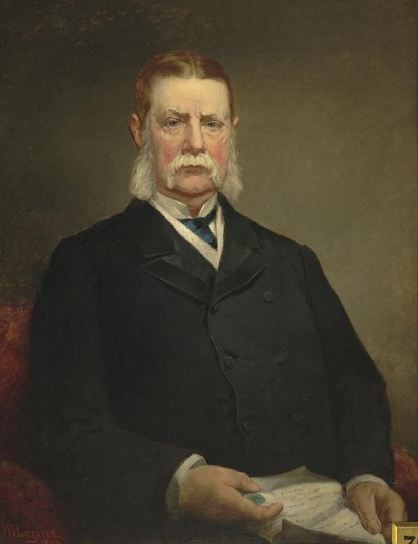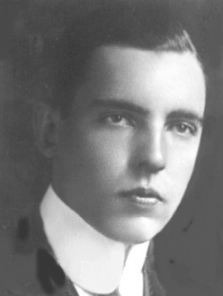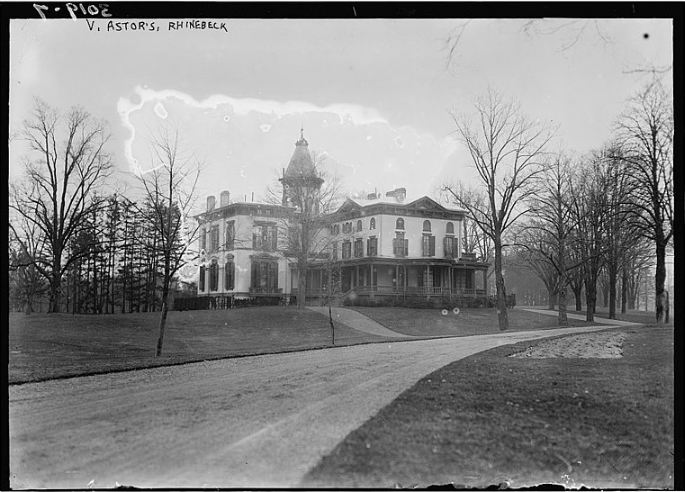The Astor family was once known as the richest family in the United States in the 19th century, and although their wealth is significantly much lower in today’s era compared to before, it could still be said that the family is still incredibly wealthy due to the overwhelming amount of money that was kept in the Astor Family Trust. How did the Astor family become so wealthy in the US, and what made some prominent figures in the family successful? We will find out as we take a closer look at the background and details about the Astor family.
John Jacob Astor
The wealth of the Astor family is said to have started with John Jacob Astor, who was born in the town of Walldorf during the reign of the Holy Roman Empire (but the town is now part of Germany) on July 17, 1763. When Astor was born, his original name was Johann Jakob Astor, and he was the youngest son of Johann Jacob Astor and Maria Magdalena vom Berg.
His father owned a butcher shop, where he also worked. In addition, Astor worked as a dairy salesman in his town before moving to London in 1779 at the age of 16. In London, he joined his brother George to work at a piano and flute manufacturing company called Astor & Broadwood, which was owned by their uncle. Aside from working in London, he also learned how to speak English and anglicized his to John Jacob Astor in the city.
Between 1783 and 1784, Astor immigrated to New York City, which was right around the time when the United States became a fully independent country after previously being part of Great Britain. For a place to stay, he rented a room from a woman named Sarah Cox Todd, who was a widower that had a daughter who had the same name as her. Astor began flirting with the younger Todd, and in 1785, they were married. Astor initially migrated to the United States in hopes of managing the butcher shop that his brother Henry established, but a chance meeting with a fur trader on his way to the butcher shop inspired him to become involved in the fur trade in North America.
After working for his brother’s butcher shop for a few weeks and earning enough money, he bought raw hides from Native Americans and began preparing the hides himself so that he could resell them in different cities in North America and other regions. By the late 1780s, he was able to own his own fur goods shop in New York. To earn more money, he also worked as an agent in his uncle’s musical instrument store.
Through the fur trade, John Jacob Astor became the United States’ first multi-millionaire. His prominence in the industry increased when he established the American Fur Company on April 6, 1808, which allowed him to have more control over the trades in the country and in other regions. In 1822, Astor founded the Robert Stuart House, a building in Mackinac Island that served as the new headquarters or main office of the American Fur Company.
By the 1830s, Astor sold his interests in the American Fur Company and started to buy large tracts of Manhattan real estate, as he believed that New York City would become one of the world’s greatest cities. His prediction was correct, and he was able to gain more revenue from real estate before his retirement in the 1840s. Astor died on March 29, 1848, and left his fortune to his two living children, William Backhouse Astor and Dorothea Astor. It is believed that most of his fortune is still in the Astor Family Trust.
Other Prominent Members of the Astor Family
Besides John Jacob Astore, there are also other members that helped increase the wealth of the Astor family. Here are the other prominent members of the Astor family that you should know about.
William Backhouse Astor Sr.
William Backhouse Astor Sr. was born on September 19, 1792, in New York City and was John Jacob Astor’s fourth child. William Astor attended local public school when he was a child, and according to historical records, he attended Columbia College in 1811 but did not graduate. William Astor then moved to Germany to study at the University of Göttingen, but later moved to the University of Heidelberg.
After graduating from college, William Astor returned to the United States in order to assist his father in the business. When he joined the company, John Jacob Astor changed the name of the business to “John Jacob Astor & Son.” He became extremely wealthy when he inherited the estate of his uncle Henry Astor I, who was childless. The estate was reported to be worth $500,000 (valued at $13.4 million in 2020). When John Jacob Astor passed away in 1848, William Astor became the richest man in the United States.
William Astor then invested in real estate, much like his father, although he mainly focused on the areas around Center Park, which was quickly increasing in value during that time. According to rumors, William Astor owned more than 720 houses and was managing insurance and railroad companies simultaneously. His most notable house, the Rokeby in Barrytown, New York, was added to the National Register of Historic Places in 1975.
John Jacob Astor III
John Jacob Astor III was born on June 10, 1822, in New York City and is William Backhouse Astor Sr.’s second child. John Astor III studied at Columbia College and graduated in 1839. He then studied at the University of Göttingen before enrolling at Harvard Law School, where he graduated in 1842. Astor practiced law for about a year before deciding to just assist the management of his family’s estate.
In terms of business deals, John Astor III became involved in railroad investments, but he was beaten by Commodore Cornelius Vanderbilt, who already had more control in the industry. As a result of his financial losses in the business, he was forced to sell the New York Central Railroad line. However, he was able to train his real estate holding in New York City, which is what most of his family’s wealth relied upon.
In his later years of retirement, John Astor III would frequently visit London, and by 1891, his son, Willy Astor, moved to Great Britain permanently and became a citizen of the country in 1899. Because of his influence in encouraging Willy Astor to move to London, historians consider John Jacob Astor III as the founder of the English branch of the Astor family.
Vincent Astor
William Vincent Astor was born on November 15, 1891, in New York City and was the son of John Jacob Astor IV and the great-grandson of William Backhouse Astor Sr. He graduated from St. George’s School in Middletown, Rhode Island, in 1910. He then attended Harvard University in 1911 but dropped out a year later in order to manage his family’s estate after his father’s death.
At the age of 20 and as the sole inheritor of the Astor family estate in the United States, he was able to surprisingly manage the estate very well throughout the early 1900s. Besides properly managing the estate, Vincent Astor also sought to change the image of the Astor family, who were particularly known by the locals as “aloof landlords” that enjoyed a wealthy life at the expense of others. He spent some of the family’s money in the construction of a housing complex in the Bronx, as well as playgrounds for children in both the Bronx and in Harlem.
Furthermore, on his death in 1959, Astor wrote in his last will that the Ferncliff, an 11-square kilometer estate of the Astor family, will be bequeathed to the Benedictine Hospital in Kingston, New York. His widow, Roberta Brooke Russell, continued Astor’s charity works as she donated the massive Ferncliff Casino to the Catholic Archdiocese of New York. Moreover, she also sold off or donated other estates belonging to Vincent Astor and became the chairwoman of the Vincent Astor Foundation.
The accomplishments of the Astor family, despite the controversies surrounding their wealth, made them one of the most prominent families not only in the United States but also in England. While the Astor family is no longer on the top list of wealthiest families, the influence of the Astor family in the economy of the United States would still be remembered even in the future.





